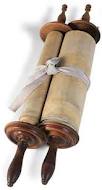 The Polish town of Auschwitz is known primarily as the site of horrific Nazi death camps, and its previous history as a town with a once-thriving Jewish community comes as a surprise.
The Polish town of Auschwitz is known primarily as the site of horrific Nazi death camps, and its previous history as a town with a once-thriving Jewish community comes as a surprise.
Stirred by an old storekeeper’s eyewitness account and his precisely-drawn map, Israeli Yariv Nornberg mounts an archeological expedition in search of some Torah scrolls and other artifacts buried beneath the floor of the Great Synagogue of Auschwitz before the Germans burned it to the ground.
Yahaly Gat’s documentary (2005) engagingly chronicles this melancholic mission, which prompted the first site excavation of a Nazi-destroyed synagogue in Poland. As locals and visitors gather as excavators find and carefully lift the synagogue’s old clay floor, a few old-timers recall the building’s destruction more than six decades earlier. Some Jewish artifacts are uncovered, including crumbling pages of a prayer book and some synagogue lamps, but so are some Nazi artifacts, such as a helmet and gasmask. The Torahs never surface.
While the dig’s Israeli organizers are sad at the end of the story, the Polish archaeologists are exultant, since the bits and pieces they recovered are “like a voice” for the lost synagogue. Gat’s subtitled documentary has more to do with the current Jewish impulse to retrieve and breath new life into the past than with the adjacent death camps, which are peripheral to the story. ♦
© 2005





